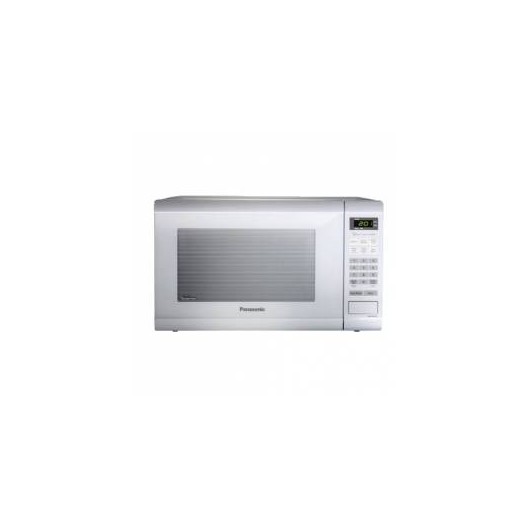Call Us
8100000734
8100000736
Offer a gift
Search for a list by last name


OVERVIEW OF PANASONIC MICROWAVE OVEN SD651:
Panasonic microwave oven SD651 is a common microwave ovens that cook food from the inside out, meaning from the center of the entire mass of food outwards. This idea arises from heating behavior seen if an absorbent layer of water lies beneath a less absorbent drier layer at the surface of a food; in this case, the deposition of heat energy inside a food can exceed that on its surface. This can also occur if the inner layer has a lower heat capacity than the outer layer causing it to reach a higher temperature, or even if the inner layer is more thermally conductive than the outer layer making it feel hotter despite having a lower temperature. In most cases, it is uniformly structured or reasonably homogenous food item; microwaves are absorbed in the outer layers of the item at a similar level to that of the inner layers. Depending on water content, the depth of initial heat deposition may be several centimeters or more with microwave ovens, in contrast to broiling (infrared) or convection heatingmethods which deposit heat thinly at the food surface. Penetration depth of microwaves is dependent on food composition and the frequency, with lower microwave frequencies (longer wavelengths) penetrating further. Microwave ovens are frequently used for reheating leftover food and bacterial contamination. Defrost oven settings use low power levels designed to allow time for heat to be conducted within frozen foods from areas that absorb heat more readily to those which heat more slowly.
SPECIFICATION:
Capacity: 42L
Turntable(mm): 380
Microwave power: 1000
Combination power(w): 1800
Oven interior: stainless steel
Door window finish: half mirror
Power input: 1800,7.5
Weight: 22kg
OVERVIEW OF PANASONIC MICROWAVE OVEN SD651:
Panasonic microwave oven SD651 is a common microwave ovens that cook food from the inside out, meaning from the center of the entire mass of food outwards. This idea arises from heating behavior seen if an absorbent layer of water lies beneath a less absorbent drier layer at the surface of a food; in this case, the deposition of heat energy inside a food can exceed that on its surface. This can also occur if the inner layer has a lower heat capacity than the outer layer causing it to reach a higher temperature, or even if the inner layer is more thermally conductive than the outer layer making it feel hotter despite having a lower temperature. In most cases, it is uniformly structured or reasonably homogenous food item; microwaves are absorbed in the outer layers of the item at a similar level to that of the inner layers. Depending on water content, the depth of initial heat deposition may be several centimeters or more with microwave ovens, in contrast to broiling (infrared) or convection heatingmethods which deposit heat thinly at the food surface. Penetration depth of microwaves is dependent on food composition and the frequency, with lower microwave frequencies (longer wavelengths) penetrating further. Microwave ovens are frequently used for reheating leftover food and bacterial contamination. Defrost oven settings use low power levels designed to allow time for heat to be conducted within frozen foods from areas that absorb heat more readily to those which heat more slowly.
SPECIFICATION:
Capacity: 42L
Turntable(mm): 380
Microwave power: 1000
Combination power(w): 1800
Oven interior: stainless steel
Door window finish: half mirror
Power input: 1800,7.5
Weight: 22kg

OVERVIEW OF PANASONIC MICROWAVE OVEN SD651:
Panasonic microwave oven SD651 is a common microwave ovens that cook food from the inside out, meaning from the center of the entire mass of food outwards. This idea arises from heating behavior seen if an absorbent layer of water lies beneath a less absorbent drier layer at the surface of a food; in this case, the deposition of heat energy inside a food can exceed that on its surface. This can also occur if the inner layer has a lower heat capacity than the outer layer causing it to reach a higher temperature, or even if the inner layer is more thermally conductive than the outer layer making it feel hotter despite having a lower temperature. In most cases, it is uniformly structured or reasonably homogenous food item; microwaves are absorbed in the outer layers of the item at a similar level to that of the inner layers. Depending on water content, the depth of initial heat deposition may be several centimeters or more with microwave ovens, in contrast to broiling (infrared) or convection heatingmethods which deposit heat thinly at the food surface. Penetration depth of microwaves is dependent on food composition and the frequency, with lower microwave frequencies (longer wavelengths) penetrating further. Microwave ovens are frequently used for reheating leftover food and bacterial contamination. Defrost oven settings use low power levels designed to allow time for heat to be conducted within frozen foods from areas that absorb heat more readily to those which heat more slowly.
SPECIFICATION:
Capacity: 42L
Turntable(mm): 380
Microwave power: 1000
Combination power(w): 1800
Oven interior: stainless steel
Door window finish: half mirror
Power input: 1800,7.5
Weight: 22kg